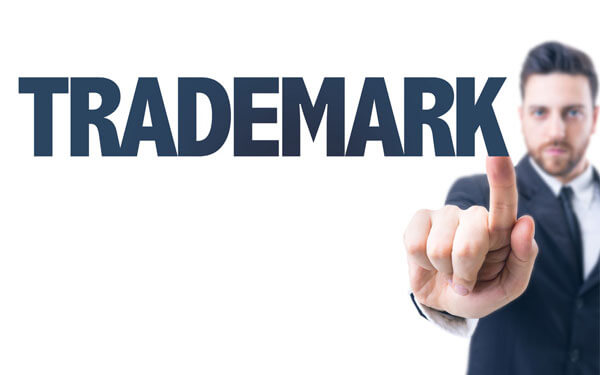This article has been written by Sakshi Rathi, pursuing a Diploma in Intellectual Property, Media and Entertainment Laws from LawSikho.
Table of Contents
Introduction
Intellectual property rights are the legal rights used to protect individuals from infringement of any of their intellectual work. Intellectual work includes any work that is created by the human mind and such work involves copyrights, patents, designs as well as trademarks. This article will give you an in-depth understanding of trademarks, and trademark disputes with the help of the famous case law – ‘’Starbucks vs Sardarbuksh’’
What is a trademark?
A trademark includes a symbol, word, phrase, logo, design or a combination of any of such things. Trademarks are used for any goods and services to be identified by the customers. Examples of a trademark can include the logo of the brand Apple, the logo of the brand Nike, the logo of McDonald’s as well as the phrase ‘’I’m lovin it’’ and other such related phrases and items.
What is a Trademark dispute?
From the above paragraph, we got an idea of what a trademark is. And, we all know what a dispute means. A dispute means a disagreement or an argument. From this, we can clearly understand, a trademark dispute means an argument or a disagreement between two people who are trying to use the same or similar trademark. Such use of the same or similar trademark is known as an infringement of the trademark. In India, infringement of a trademark is an offence. Thus, the offender shall have to bear the consequences.
Can two trademarks be deceptively similar?
Section 11 of the Trademarks Act 1999 deals with the grounds on which the registration of trademarks can be refused or denied i.e., it deals with reasons for which the trademark may not be registered. One of the reasons mentioned in the section for which the trademark can be refused or denied registration includes the trademark being refused for registration because it is “Deceptively Similar’’ i.e., it is identical or similar to another mark, and for this reason, it creates confusion in the buyer’s mind. So, two trademarks cannot be deceptively similar. Below is a landmark judgement to understand the concept of “Deceptive similarity’’ in detail.
Parle Products (P) Ltd. V. J.P. & Co. Mysore
Facts of the case
The plaintiffs-appellants before the court are manufacturers of biscuits and confectionery and they also own certain registered trademarks. One of the trademarks that they own includes the word “Gluco” which is used on their half-pound biscuit packets. Another registered trademark that they own is a wrapper with its colour scheme, general set up and entire collocation of words registered under the Trade Marks Act 1940. This wrapper is used concerning the sale of their biscuits known as “Parle’s Gluco Biscuits” which is printed on the wrapper. The wrapper is of buff colour and depicts a farmyard with a girl in the centre carrying a pail of water, with cows and hens around her along with a background of a farmyard house and trees. The plaintiffs claim that they have been selling their biscuits on a large scale for many years under the said trademark which has gained a huge reputation and goodwill to them in the public. They claimed to have discovered in March 1961 that the defendants were manufacturing, selling and offering for sale, the biscuits in a wrapper which according to them was deceptively similar to their registered trademark. The plaintiffs contended that this act of the defendant constituted an infringement of their trademark rights. Despite the lawyer’s notice, the defendants continued the manufacturing, selling and using of the wrappers which had a deceptively similar trademark on them. Such a deceptively similar trademark was the registered trademark of that of the plaintiffs. The plaintiffs filed the suit claiming injunction.
Trial court
The trial court, after examining the features of both the wrappers, found that there were greater dissimilarities between the wrappers than there were similarities. Consequently, the trial court held that the plaintiffs had failed in establishing their case.
High court’s verdict
The high court said the Court had to keep in mind that it was dealing with packets of biscuits that were generally used by people of the upper classes. There were many discriminating features between the two wrappers which were very apparent. The similarity in both the wrappers was narrowed to the extent that both were partly yellow and partly white and both had the design of a girl and some birds. The lady in the wrapper used by the Appellant had a pot on her hand while the lady in the wrapper used by the Respondent had a hay-bundle on her head. Respondent’s wrapper had pictures of cows and Appellant’s wrapper showed two calves. Therefore, the court said, they are not so similar that they can deceive an ordinary purchaser of biscuits.
Supreme Court’s verdict
In an act of infringement, where the similarity between the plaintiff’s and defendant’s mark is so similar to an extent where it is either visually, phonetically or otherwise matching or close and if the court reaches a conclusion that there is some kind of imitation or copying, then there is no need of any further evidence to prove that the plaintiff’s rights are violated. The court opined, to conclude whether one mark is deceptively similar to another, the essential features of the two are to be taken into consideration. They need not be put side by side to ascertain if there are any differences in the design. It shall be enough if the impugned mark bears overall similarity to the registered mark. The court stated, the packets of both the biscuits are of the same size, the colour scheme of both the wrappers is almost the same and the design of both, though not identical, shows a very close resemblance that it can easily be mistaken for the other. The essential features of both the wrappers are also similar. Therefore, there is no doubt that the defendants’ wrapper is deceptively similar to that of the plaintiff’s wrapper. Accordingly, the verdict was given in favour of the plaintiff. This case made it very clear that two trademarks can’t be deceptively similar.
According to section 2(1)(h) read with section 11 of the Trademark Act, 1999, deceptively similar means the mark resembling the other mark is likely to deceive or cause confusion. Further, the fact that both the parties are dealing in the same kind of trade and offering the same services to its customers also plays an important role. In deciding the question of deception and confusion the fact that the purchaser/buyer/customer might or might not be literate should be kept in mind.
The above case stands as a landmark one when it comes to the concept of deceptive similarity. It has provided a lot of clarity concerning cases related to the infringement of trademark through deceptive similarity and acted as a reference for future cases. After this case, there have been many cases with regards to deceptive similarity and one such recent case is the Starbucks vs Sardarbuksh case. Here is a detailed discussion of that case:
Starbucks v. Sardarbuksh
This case involves Starbucks corporation and sardarbuksh coffee and co. Starbucks is the plaintiff and sardarbuksh is the defendant in the case. Starbucks is a famous coffee joint known for its coffee and has branches in multiple countries. Sardarbuksh is also a coffee place started in Delhi in 2015 having many outlets.
Starbucks has its logo and name registered and is globally recognised. It is a well-known trademark with its logo depicting a crowned maiden with long hair in green colour. Sardarbuksh’s logo has a turbaned man with wavy lines extending from the sides. This makes the Sardarbuksh coffee and co. ‘s logo looks very similar to that of Starbucks. There are many other similarities such as the colour of the crowned maiden from the Starbucks logo and the colour of the turbaned man from the sardarbuksh logo are the same. Both the logos are round in shape. So, when we compare, the logos look very similar, the shape of the logo is the same and the colour of the logo is also the same. Moreover, the names of both coffee places also sound very similar. One more thing that needs to be noted is that the goods and services provided by both defendants and plaintiffs are identical.
After receiving a letter of demand from Starbucks Corporation in 2017, the defendants made necessary changes to their logo and changed their colour scheme to black and yellow and started trading under the new logo.
Later on, Starbucks filed a case against Sardarbuksh before the Delhi high court on 1st August 2018 for using the word mark’’Sardarbuksh’’ which was sounding very much like ‘’Starbucks’’.
The Delhi high court advised the defendants to go for new branding for its upcoming outlets while the five outlets that have been already functioning will continue the same way until the court’s final verdict. So, the defendants changed their name from “Sardarbuksh Coffee & Co.” to “Sardarji-Bakhsh Coffee & Co for their upcoming outlets.
On September 27, 2018, there was an exchange of terms and conditions between the parties, and such terms and conditions were put on record with the High Court of Delhi. Further, it was agreed that the defendant would change the name of all its outlets to “Sardarji-Bakhsh Coffee & Co.” Additionally, it was clarified and agreed upon that, if a third party uses the term “Bakhsh,” the defendant will have a right to file a suit against such a violator. The suit was finalized on the said terms.
Conclusion
This judgement in a way encouraged the registration of trademarks. Because, if a person has his trademark registered, there cannot be any means through which such trademark can be exploited by making a deceptively similar trademark and using it for their economic gains or to hamper the goodwill of such registered trademark or the trademark owner. Additionally, if any individual tries to do so, he will have to face the legal consequences.
As a trademark has a good reputation and goodwill, it is really important to protect it from any kind of exploitation, misuse and violation. With the help of the above cases, we can clearly understand that the court can go beyond what is written in the law to preserve justice, protect the rights of the traders and the interests of the consumers. Such cases make it easy for people to have faith in the judiciary.
References
Deceptively Similar Trademarks: Examples & Case Study | Intepat IP
Students of Lawsikho courses regularly produce writing assignments and work on practical exercises as a part of their coursework and develop themselves in real-life practical skills.
LawSikho has created a telegram group for exchanging legal knowledge, referrals, and various opportunities. You can click on this link and join: https://t.me/joinchat/L9vr7LmS9pJjYTQ9
Follow us on Instagram and subscribe to our YouTube channel for more amazing legal content.












